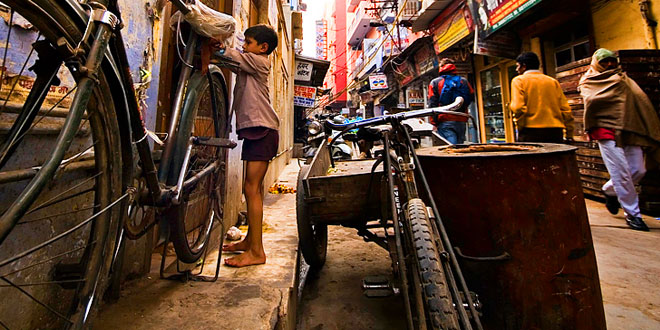Question: “Cities of the 19th century also became the breeding grounds for the politics”. Explain by taking examples from London.
Answer:
- In 1556 when outdoor work came to a standstill, the London poor exploded in a riot, demanding relief from the terrible conditions of poverty.
- In 1857 once again poor came on to the streets for the similar demands.
- In 1889 thousands of workers of London dockyard went on strike demanding to recognize dockworkers union.
Question: (1) Under whose control was Bombay in the 17th century? Why the control of island passed into the British hands?
(2) How did the development or expansion of Bombay differ from London?
Answer:
- In the seventeenth century. Bombay (Mumbai) was a group of seven islands under the Portuguese control. In 1661. the control of the islands passed into the British hands after the marriage of Britain’s King Charles II t the Portuguese princess.
- (i). It was an overcrowded city where a person hod only about 9.5 square yard of space, whereas it was around 155 square yard per person in London.
(ii). The city did not grow according to a plan, whereas London grew according to a plan.
Question: Give reasons for the following :
(1) The Rent Act led to the housing crisis in Bombay (Mumbai).
(2) Expansion of the city has always posed a problem in Bombay (Mumbai).
(3) What were chawls?
Answer:
- Because landlords withdrew houses from the market.
- Because of the scarcity of land
- Chawls were multistory structures built since 1560s in the native parts of Bombay Mumbai) These were largely owned by private landlords who were looking for quick ways of earning money from the anxious migrants. Each chawl was divided into smaller one room tenements which had no private toilets.
Question: Mention any three factors which promoted migration to Bombay or presently. Mumbai.
Answer:
- Bombay now Mumbai: was the hub of trade in opium and cotton.
- Bombay (now Mumbai) was also at the junction head of two major railways. The railways encouraged a large number o! people to migrate into the city.
- The establishment of textile mills.
Question: ‘The policy of racialism and discrimination was visible in the colonial cities.’ Explain by giving examples.
Answer:
- The Bombay (Mumbai) fort area was divided between a ‘native town’ where most of the Indians lived and a ‘white section where the Europeans lived.
- A European suburb and an industrial zone developed to the North ol the fort area with a similar suburb and cantonment in the South.
- The richer Parsi, Muslims and upper caste traders and industrialists of Bombay lived in sprawling spacious bungalows whereas 70% of the working people lived in chawls.
Question: Mention any four features of houses of the Bombay city which developed during the colonial period.
Answer:
- Most of the houses were owned by private landlords.
- Most of the people were living in chawls.
- The houses were very small. So streets and neighborhoods were used for a variety of activities such as cooking, washing and sleeping etc.
- The richer Parsi. Muslims and upper casts traders lived in spacious bungalows.
Question: Mention the major characteristics of an ancient town.
Answer:
- The towns and the Cities that first appeared along the river valleys like Ur and Mohenjodaro were larger in scale than other human settlements.
- These cities were the centers of political power, administrative network, trade and industry, religious institutions and intellectual activities.
- These cities supported various social group such as artisans, merchant; and priests
- These cities varied greatly in size and complexity. Some were metropolises and oilier; smaller urban centres.
- Industrialization played an important role in the expansion of cities.
Question: Explain with examples how has industrialization changed the form of urbanization In England in the modem period.
Answer:
- Towns and Cities that first appeared along river valleys, such as Ur, Nippur and Mohenjodaro. were larger in scale than other human settlements.
- The ancient cities could develop only when an increase in food supplies made it possible to support A wide range of non-food producers.
- The cities were often the center; of political power, administrative networks, trade and industry, religious institutions, and intellectual activity, and supported various social groups such as artisans, merchants and priests. But the industrialization changed the form of urbanization. The modern towns like London. Leeds. Manchester developed because they attracted large number of workers to the textile mills.
- The city of London became a powerful magnet for migrant populations, even though it did not hove large factories.
 Class Notes NCERT Solutions for CBSE Students
Class Notes NCERT Solutions for CBSE Students





